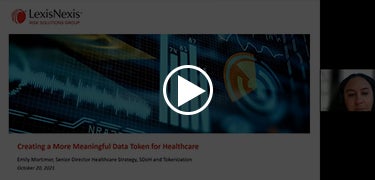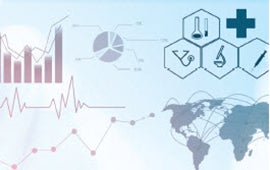Address Data Integration and De-identification Challenges with Tokenization
Create a more meaningful healthcare token for seamless data integration.
Arguably, we are living in a time where data is king, which makes integration of that data, so that it can be used effectively, critical. From everyday social media content, to banking and grocery transactions, to what is generated for patients as they journey through our modern healthcare systems, data is part of everyday life. While imperfect transactions with these datasets may serve other industries to an acceptable level, in healthcare, the stakes have never been higher to achieve accurate and secure data integration.
Today, healthcare organizations are faced with exploring problems that span an array of data sources in an environment keenly focused on patient privacy while consistently maintaining accuracy. Integration of real-world data and real-world evidence, efficacy and outcomes research, health equity, vaccine passports and authentication, precision medicine – these are just a few examples of the challenges that face healthcare organizations for which healthcare data and analytics are a part of the solution.
 The 21st Century CURES Act specifically called for the FDA to evaluate how real-world data would be used. There is an opportunity to use real-world evidence not only to understand safety, but to be able to generate evidence to drive toward new indications of drugs or for post-approval study requirements. But in this guiding document, the FDA talks about how not all data can be leveraged for specific problems. Claims data comes with a purpose; clinical and electronic health record (EHR) data comes with a purpose. Using the data available, fields might be left incomplete or inconsistent as it relates to EHR data in particular. This means that not all real-world data is created equal and it’s not all going to be equally valuable. We must consider the source and how to align the information available for effective data-driven decision-making.
The 21st Century CURES Act specifically called for the FDA to evaluate how real-world data would be used. There is an opportunity to use real-world evidence not only to understand safety, but to be able to generate evidence to drive toward new indications of drugs or for post-approval study requirements. But in this guiding document, the FDA talks about how not all data can be leveraged for specific problems. Claims data comes with a purpose; clinical and electronic health record (EHR) data comes with a purpose. Using the data available, fields might be left incomplete or inconsistent as it relates to EHR data in particular. This means that not all real-world data is created equal and it’s not all going to be equally valuable. We must consider the source and how to align the information available for effective data-driven decision-making.
Independent research has shown that 24% of U.S. adults move in a 5-year period and 1.3 million are moving out of state every year. In addition, two million marriages occur annually, which results in some subset of name changes as well. Long-term analyses convey the idea that tracing these events are impactful to the ability of healthcare organizations to trace an individual over time. This makes it imperative for healthcare organizations to be able to strengthen a healthcare token over time with reliable data sources and analytics to ensure that the correct information continues to be integrated into a single profile.
It’s important to think about real-world data as coming from beyond the familiar sources of EHR, claims and billing activities. What about disease registries? Health data generated from home care, medical devices, and wearable products? There are many potential sources of information that could be used to generate evidence to drive healthcare goals. Data integration and de-identification are key steps toward being able to use that information effectively to improve clinical outcomes.
Healthcare tokenization addresses some challenges of data integration and de-identification, but often without a patient focus. In this webinar, we explore these topics and more:
- The benefits of a solution centered on the patient
- A solution that produces a compliant, de-identified token with comprehensive patient tracking
- Healthcare-specific use cases and the impact on patient care, clinical trials, research, and other real-world outcomes.
View the Webinar

Healthcare System Ensures Patient Information in MyChart® with LexisNexis® Risk Solutions
Products You May Be Interested In
-
Instant Verify for Healthcare
Accelerate identity verifications with a solution customized to fit your workflow
Learn More -
InstantID® for Healthcare
Identify fraud risks across exchanges and broker communities
Learn More -
InstantID® Q&A for Healthcare
Seamlessly verifies the identity of patients, medical staff and pharmacists.
Learn More -
LexID® for Healthcare
Protect the identities of healthcare consumers.
Learn More


